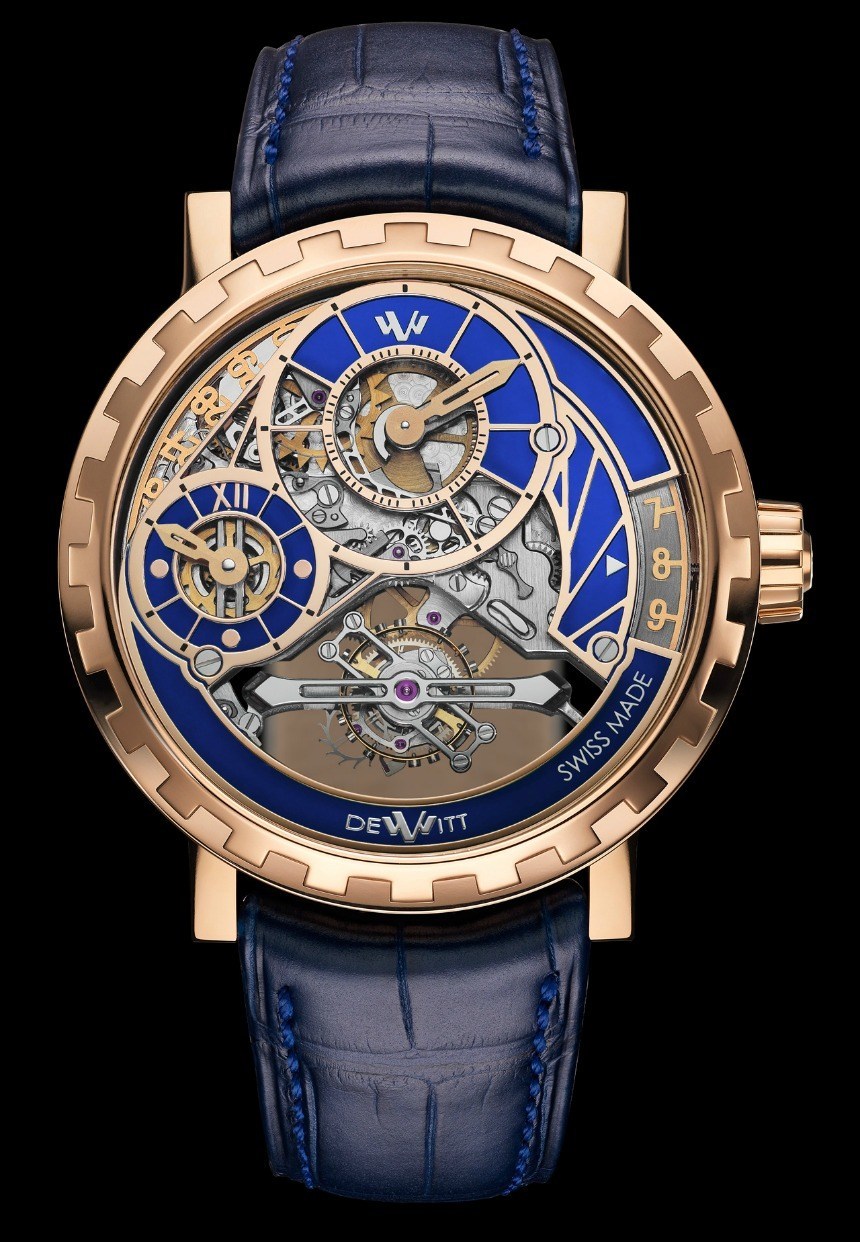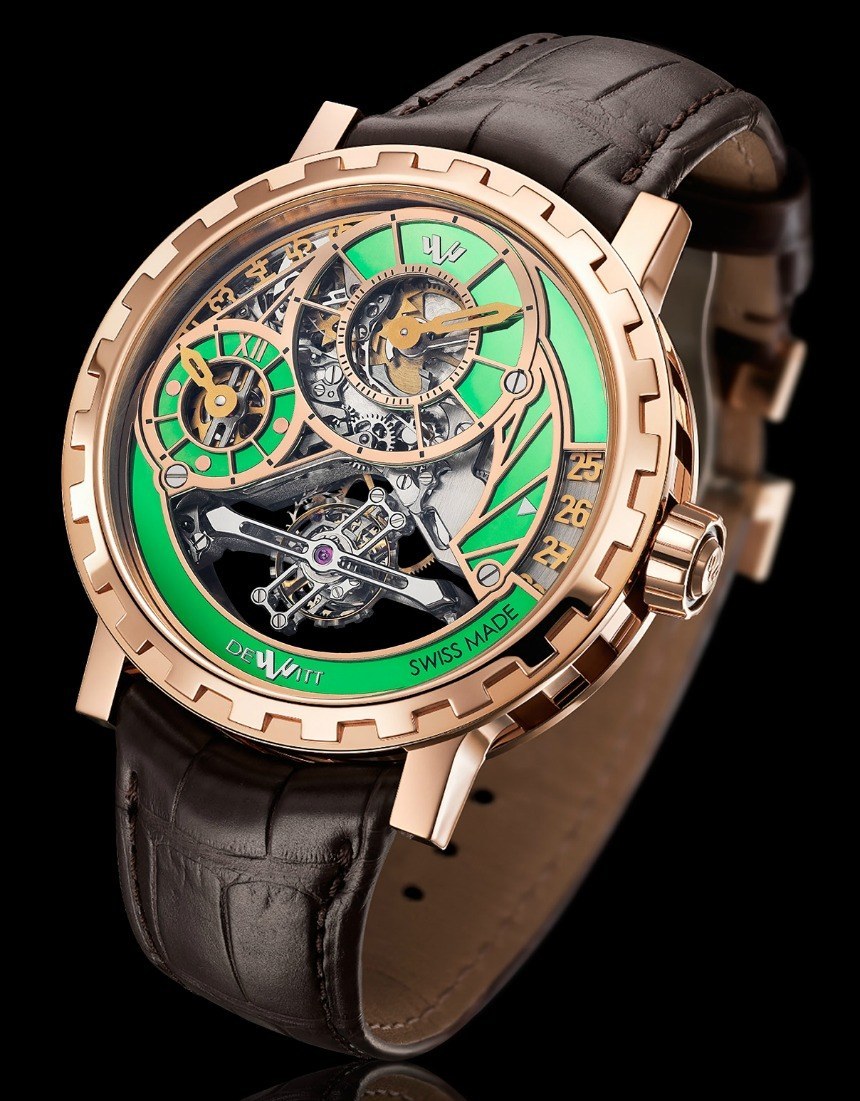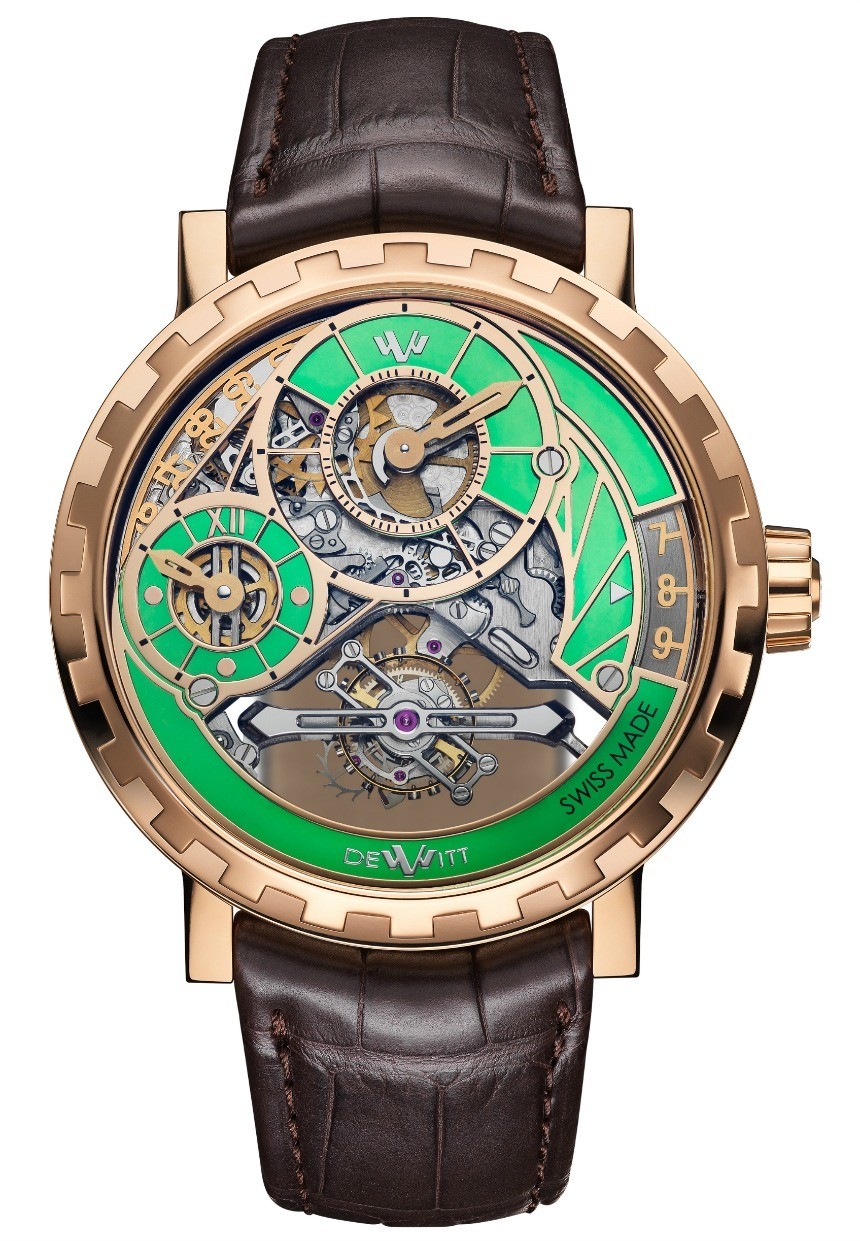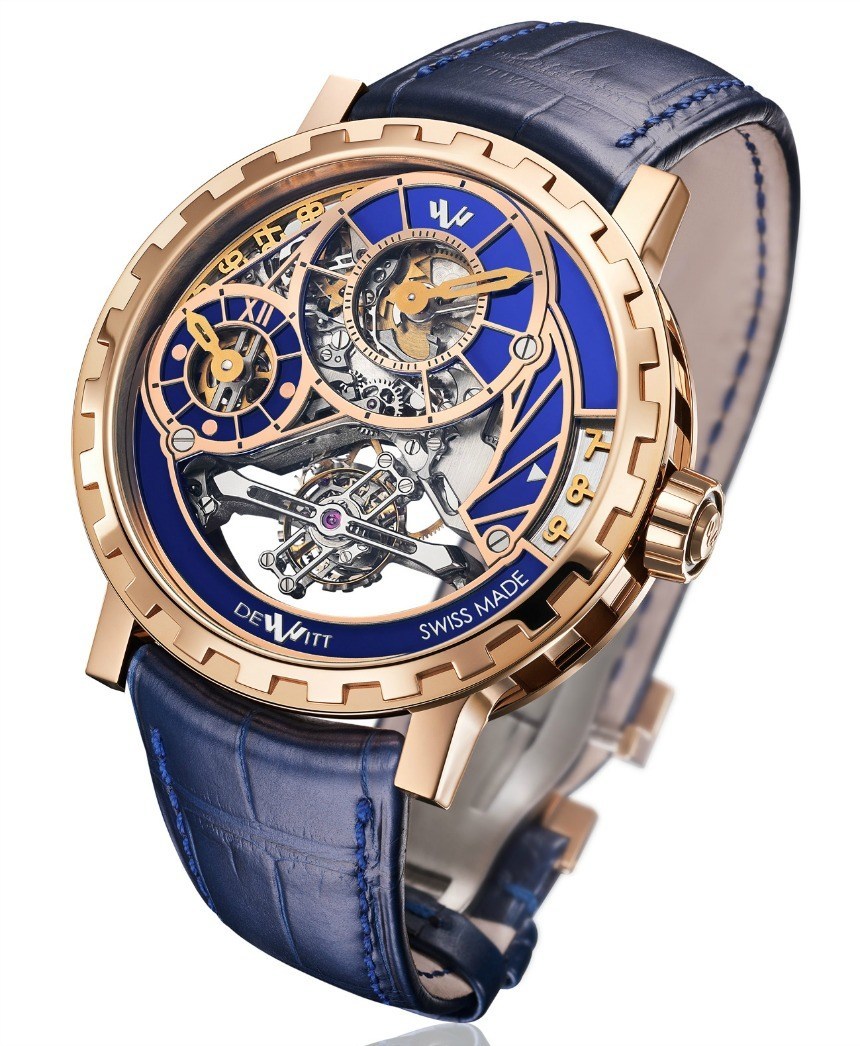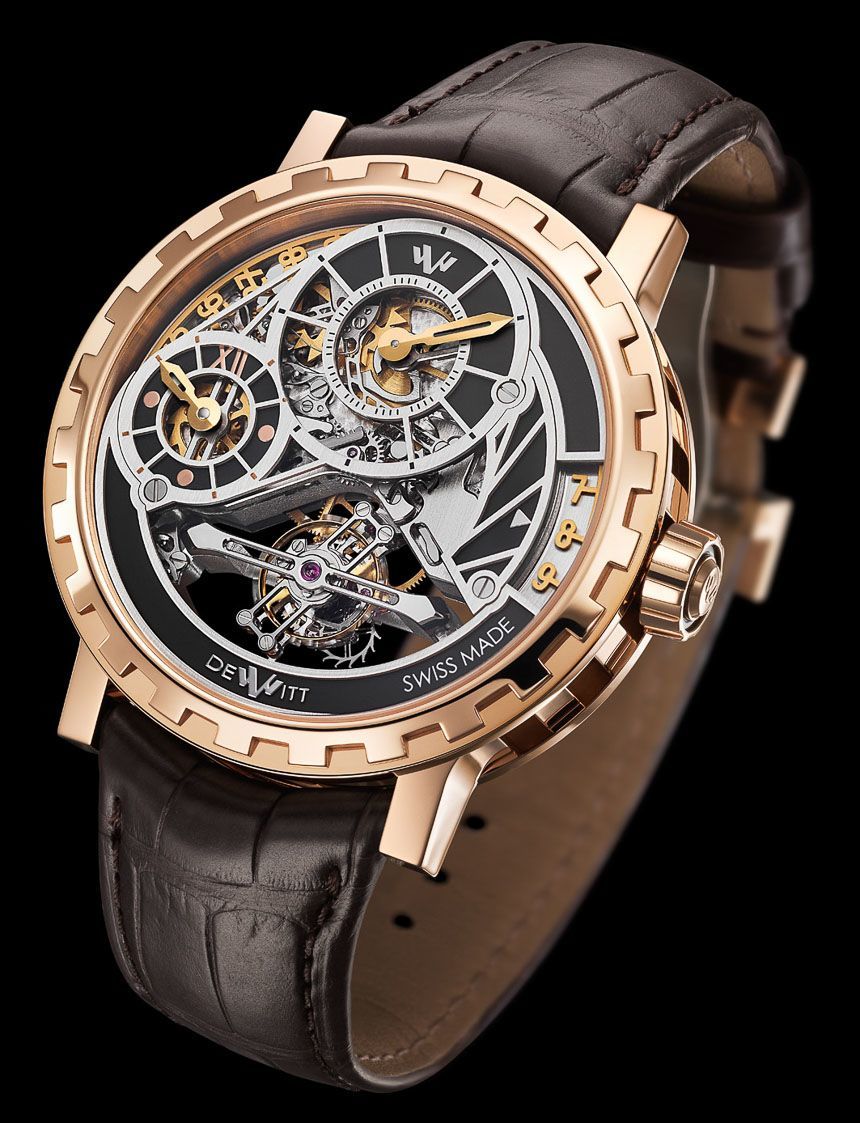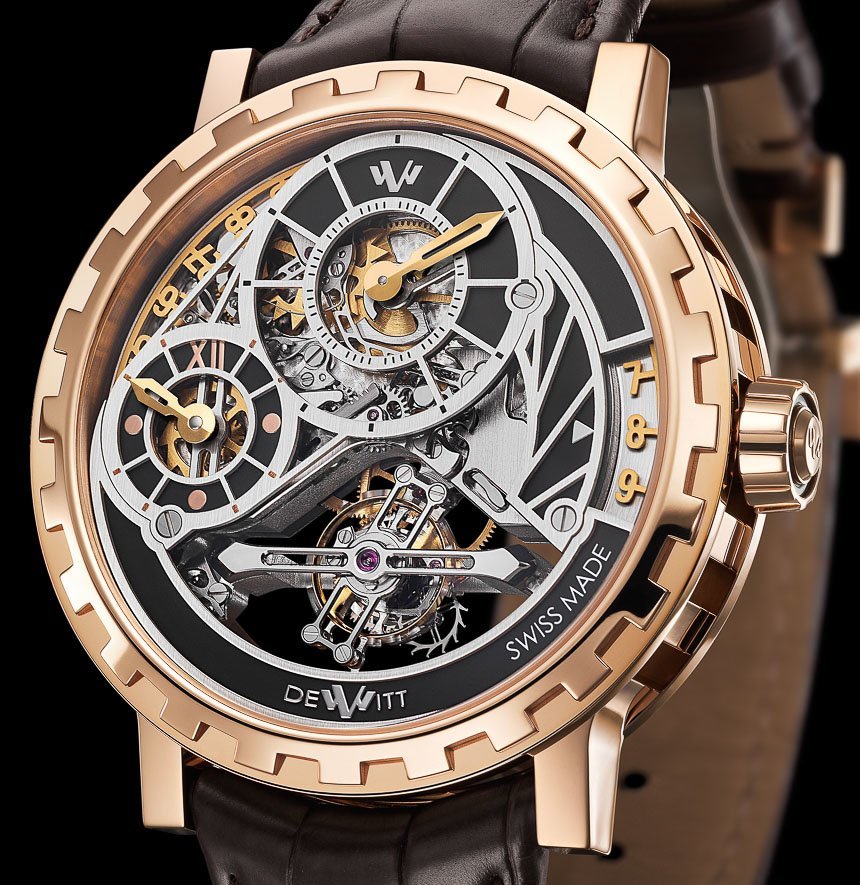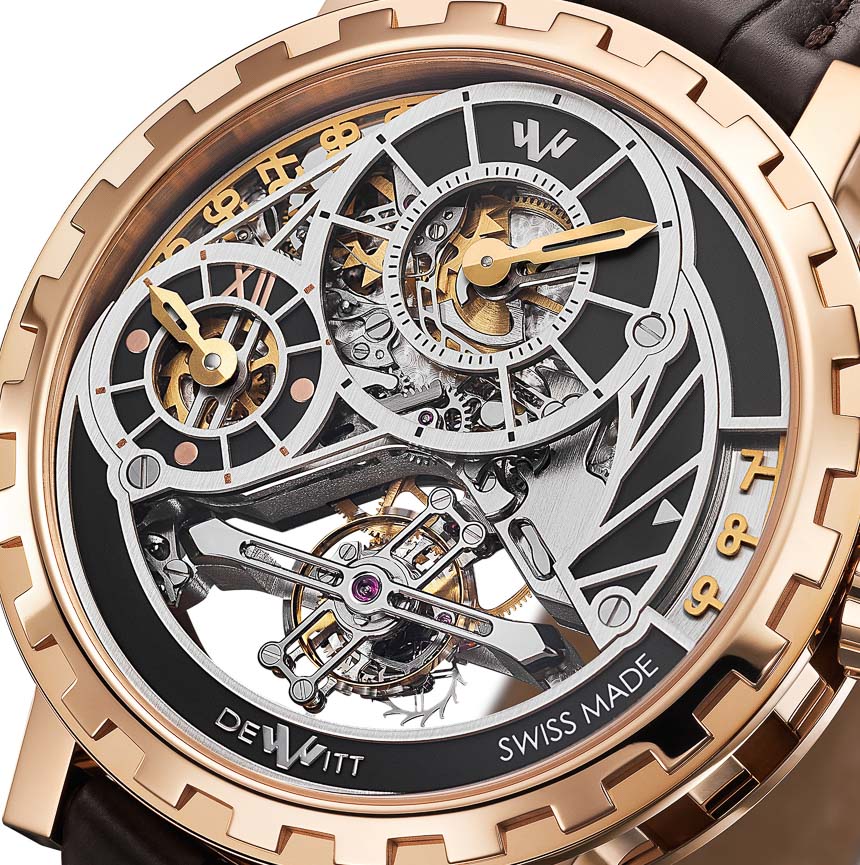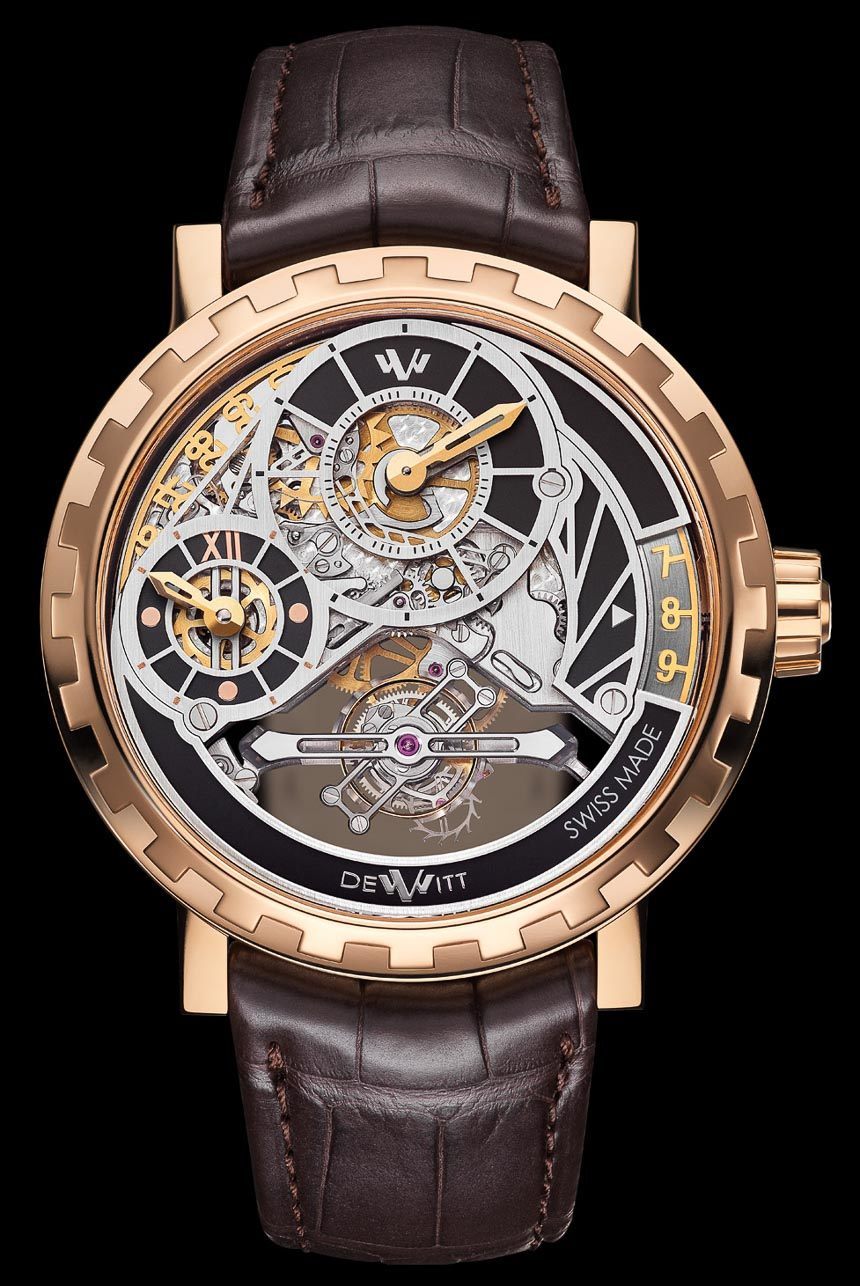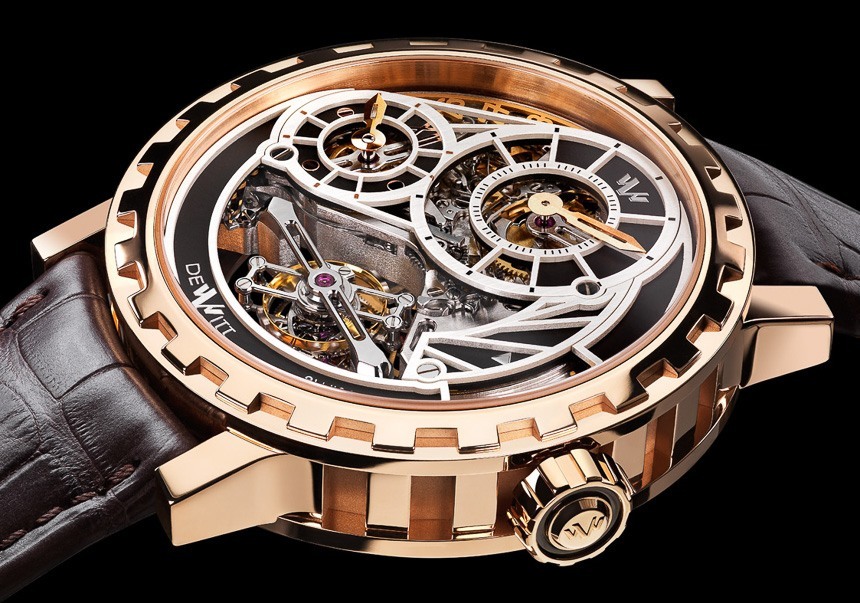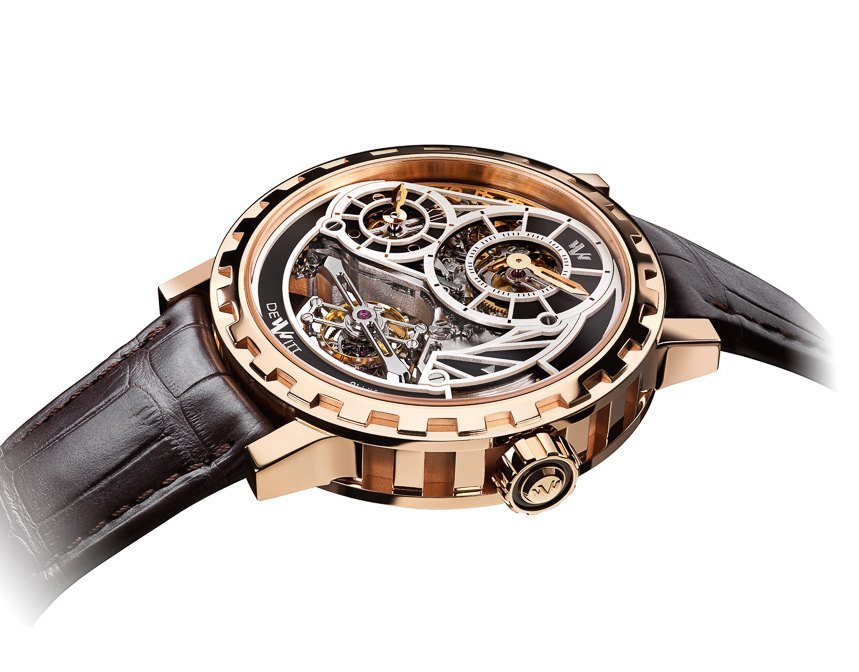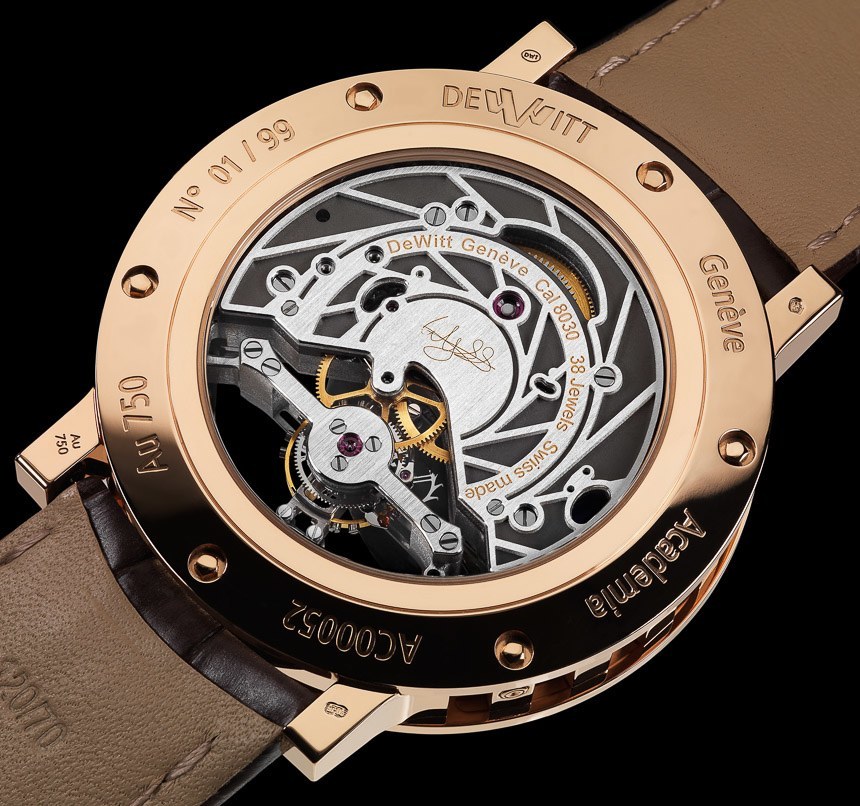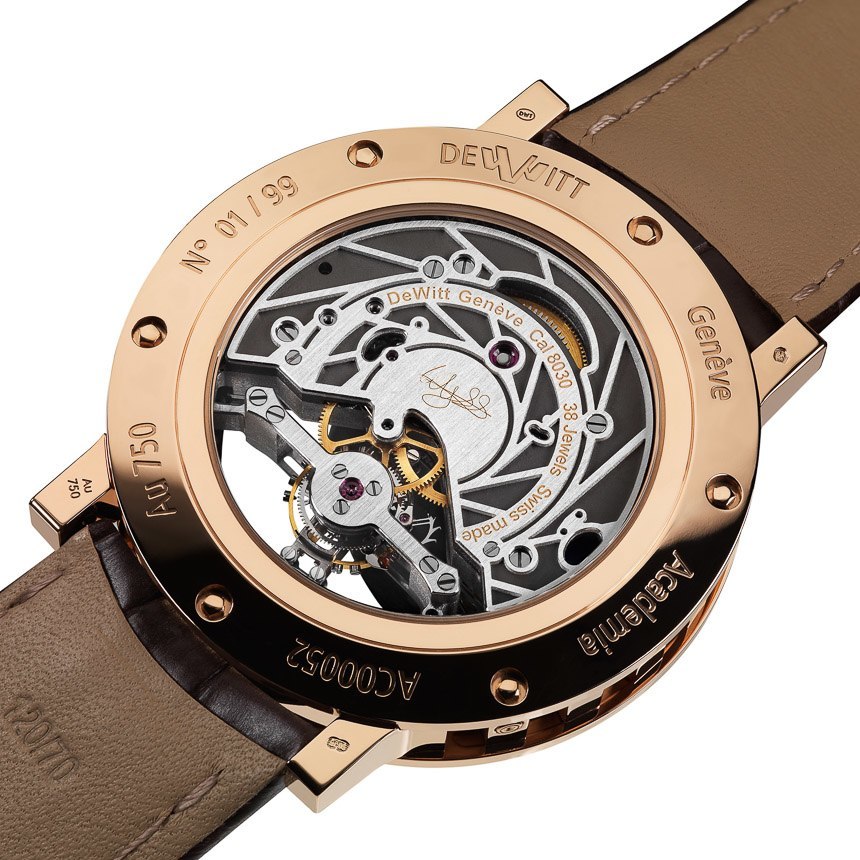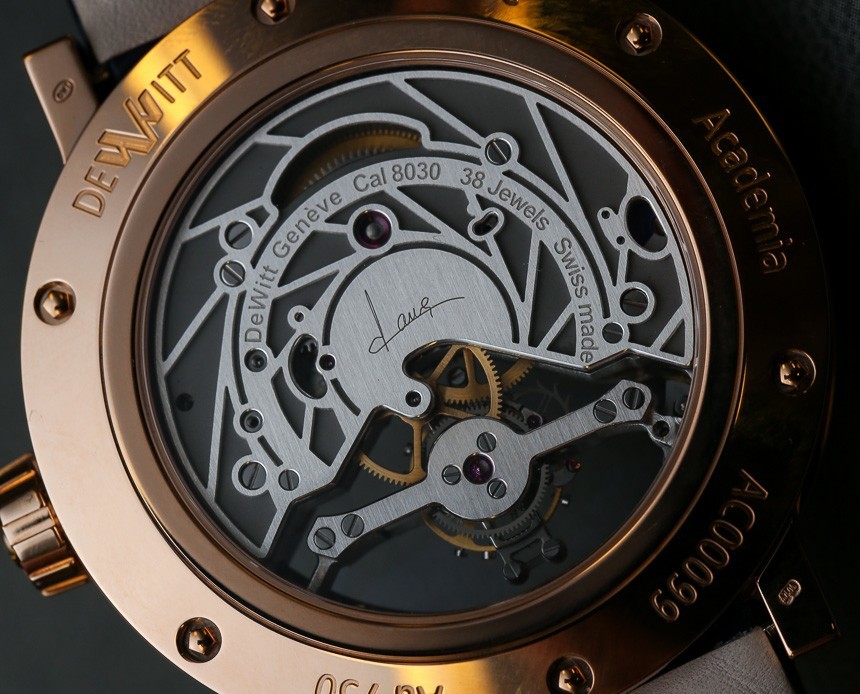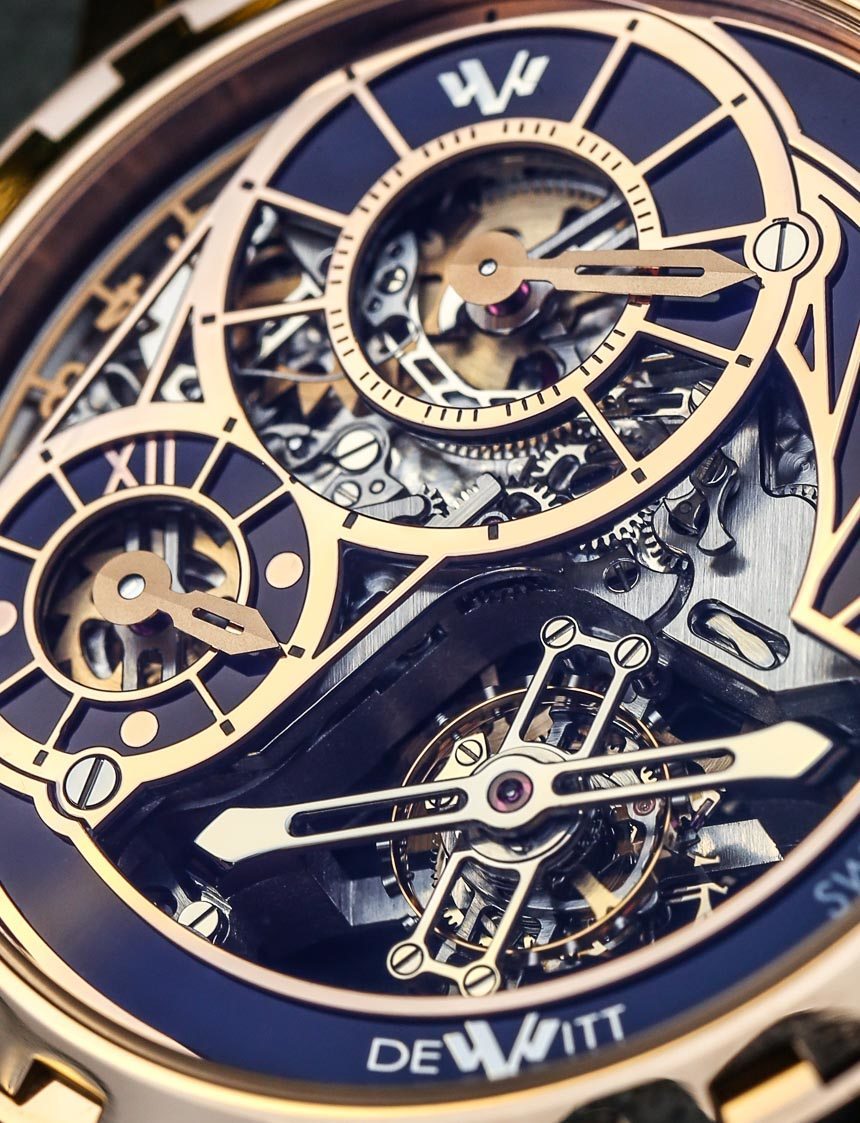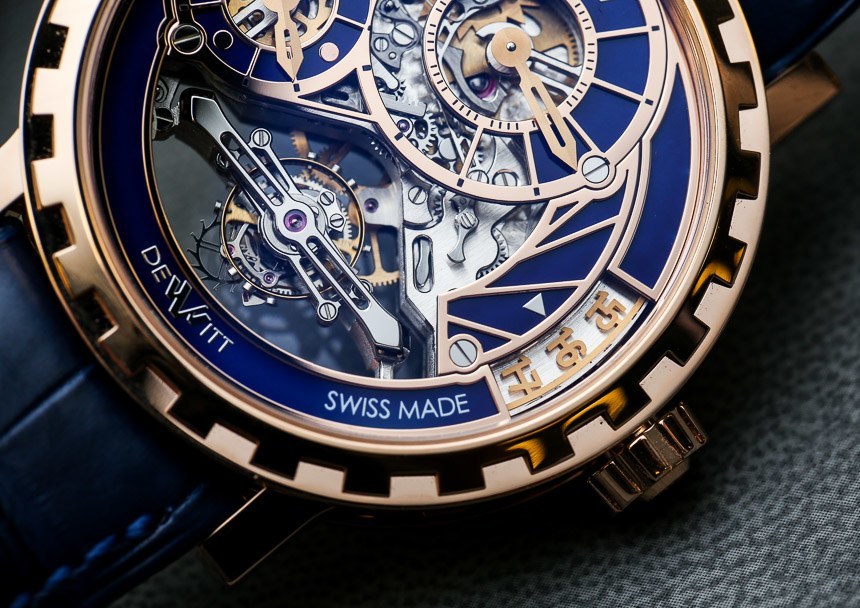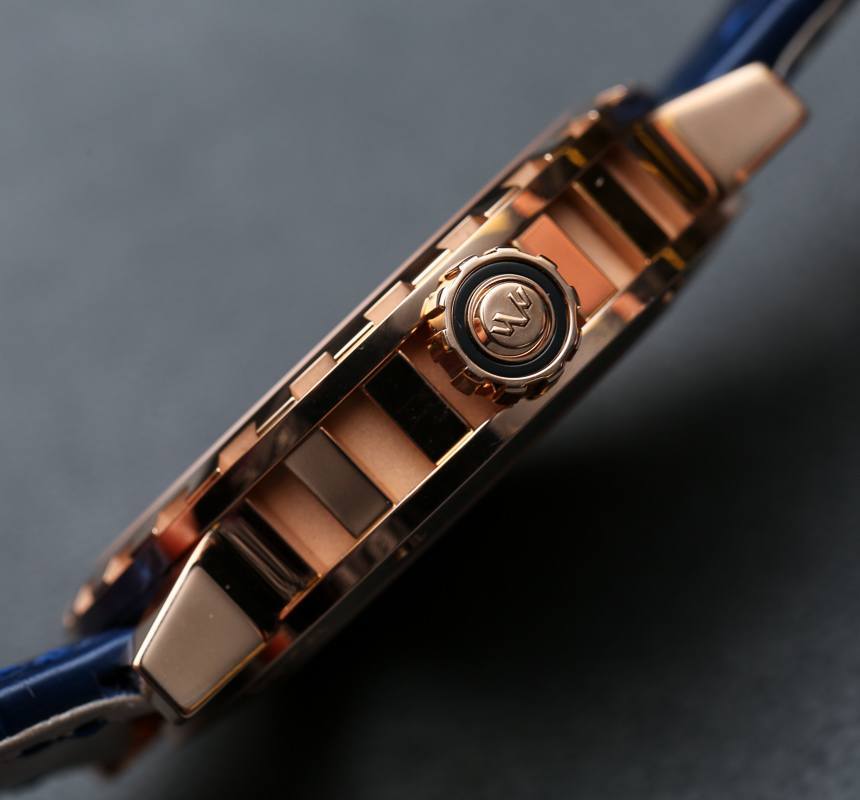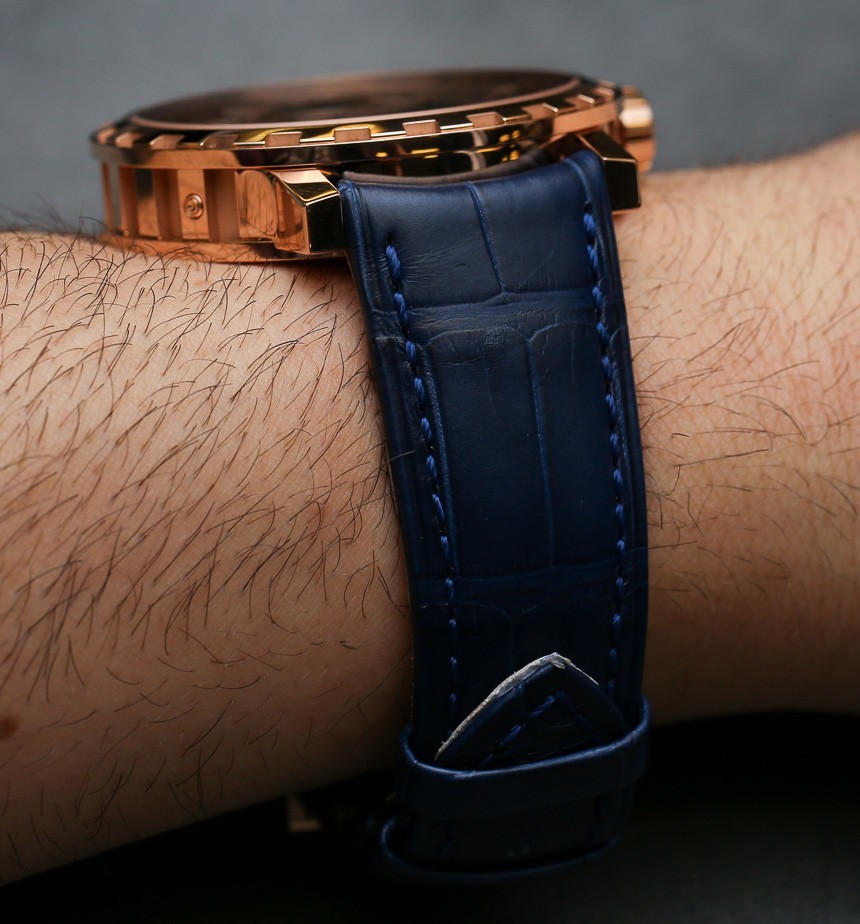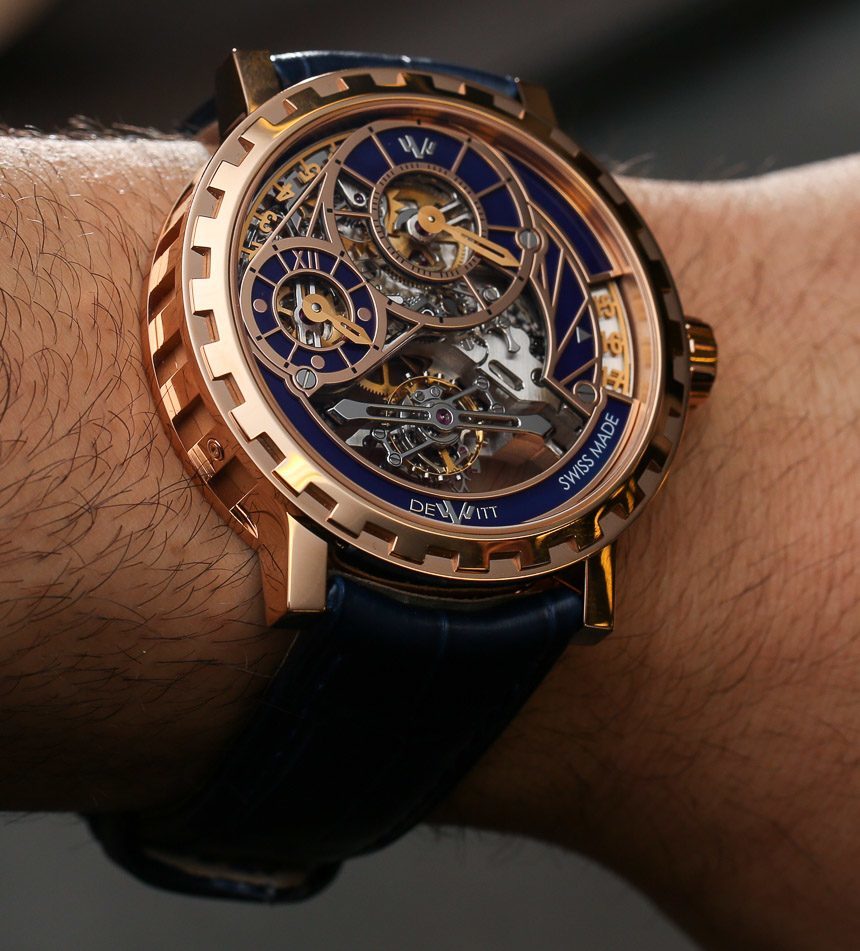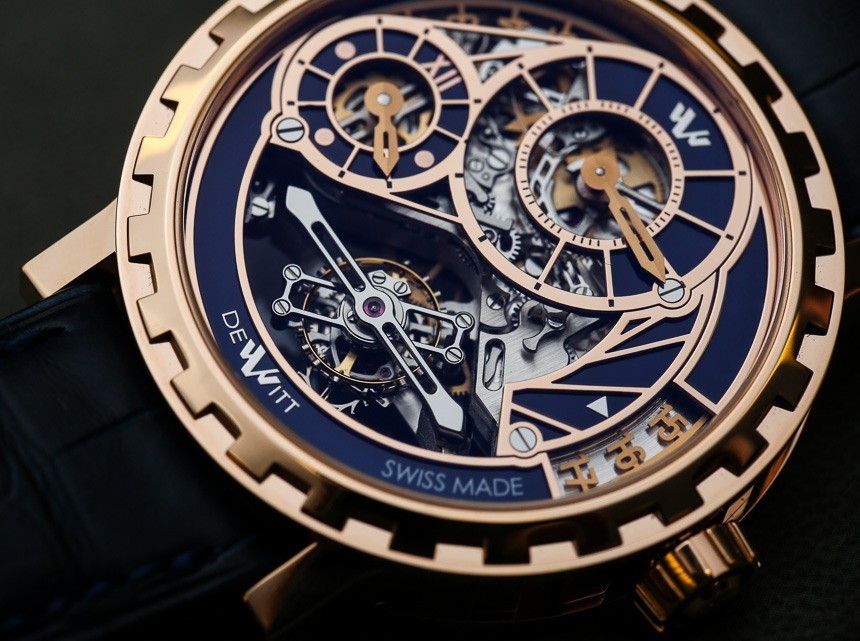
Recently, while in Geneva, Switzerland, I had the opportunity to visit “manufacture DeWitt,” an impressive and resolutely niche high-end watch maker who produces almost everything themselves and is owned by Mr. Jerome DeWitt – whose family tree includes Napoleon Bonaparte. Jerome himself is a humble man whose main passions in life include mechanical things. One of the most impressive parts of the manufacture is his own personal collection of ancient machines (his “mechanical museum,” if you will). Jerome has the soul of an artist who is deeply interested in mechanics and the visual celebration thereof. It is actually his wife – who is currently in a directorial role at the company – that brought DeWitt back from some of its financial issues. Together, the dynamic DeWitt duo has strengthened the brand to make it the company of today that I really admire – a unique brand, whose timepieces all have something interesting to say (regardless of whether or not you like that statement).
As boutique as the brand is (well they aren’t that boutique, given the size of the place) an impressive number of new timepieces and movements are being produced at DeWitt on a regular basis. A great example of their technical and visual strength is a timepiece collection such as this DeWitt Academia Grand Tourbillon watch, which is new for 2015. It combines a skeletonized in-house-made tourbillon movement, a regulator style display, as well as jumping indicators for the hours and minutes. If that doesn’t make sense to you, then I’ve included a short video I posted of the DeWitt Academia Grand Tourbillon watch that demonstrates how the hands move in “jumping steps” versus in a sweeping motion as on most other watches.
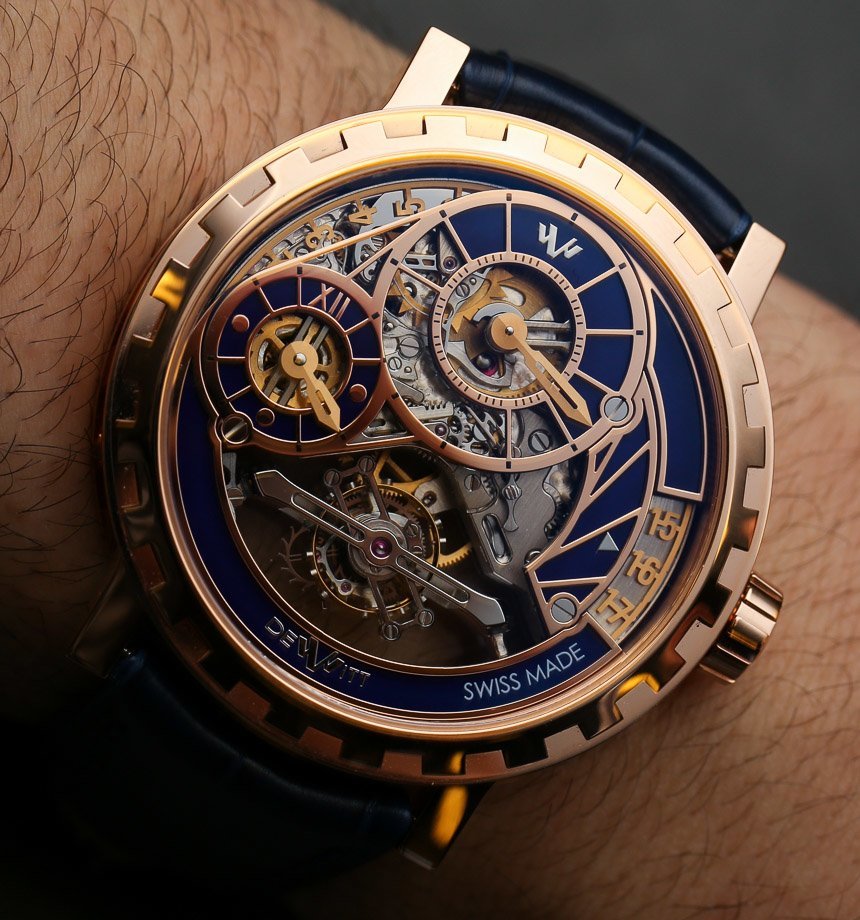
What makes this jumping hours and minutes system so relevant on a regulator-style display (where the hours, minutes, and seconds are each indicated on their own separate dial) is that, historically, these types of layouts were used on the most precise clocks (which were called regulator clocks). The name is based on the fact that the clocks were used to “regulate” the time of other clocks. Many of these had “dead seconds” hands which ticked versus sweeping for a more precise ability to read the time. While I don’t know if this is a novel concept (I sort of doubt that it entirely is) DeWitt has adopted the ticking concept of a dead seconds hand to the hours and minute hands. I find the concept interesting both technically and emotionally as the concept very much fits into the notion of idealized mechanical indication of the time.
In the gallery at the end of the article, you’ll find a few images from DeWitt as well as additional images I took of the DeWitt Academia Grand Tourbillon. I included those images to illustrate how there is a bit of a fashionable element to the collection, as well as that the 18k rose gold cases with their “imperial column” sides have dials accented in black, blue, and, remarkably, also green. The latter is an interesting option for sure. Like many other DeWitt watches, the DeWitt Academia Grand Tourbillon wears prodigiously at 46mm wide, but only 11.90mm thick. The new motto of the brand is “Heirs of Napoleon,” which should be an indicator to you that nothing about what DeWitt is trying to do attempts to be “discreet.” Which, for some people (or moods), is an excellent thing.
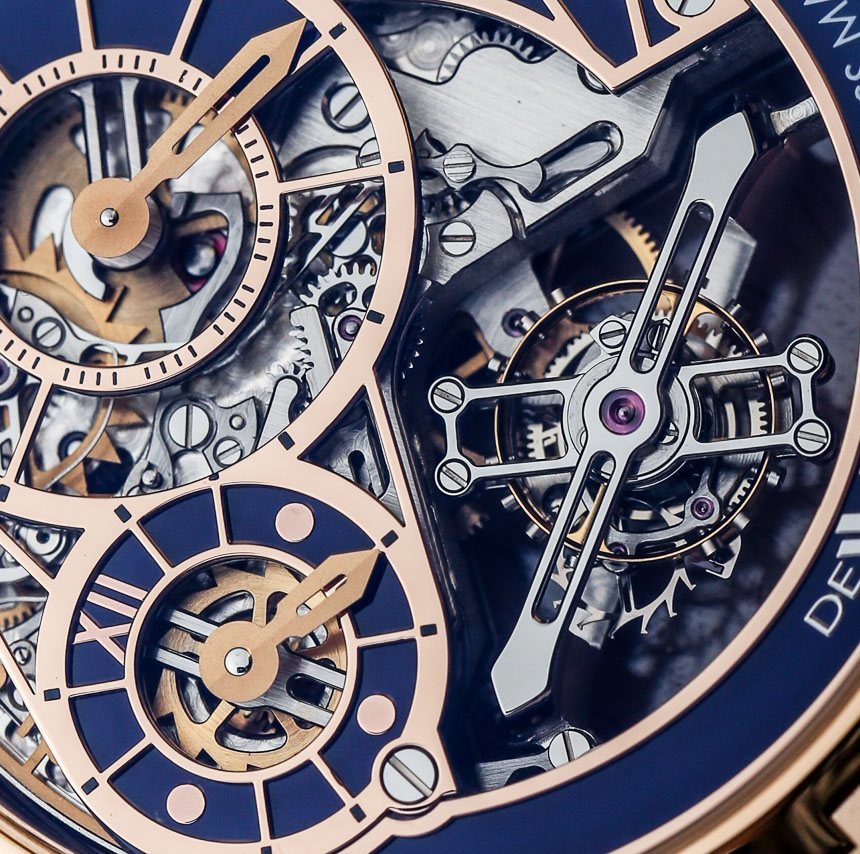
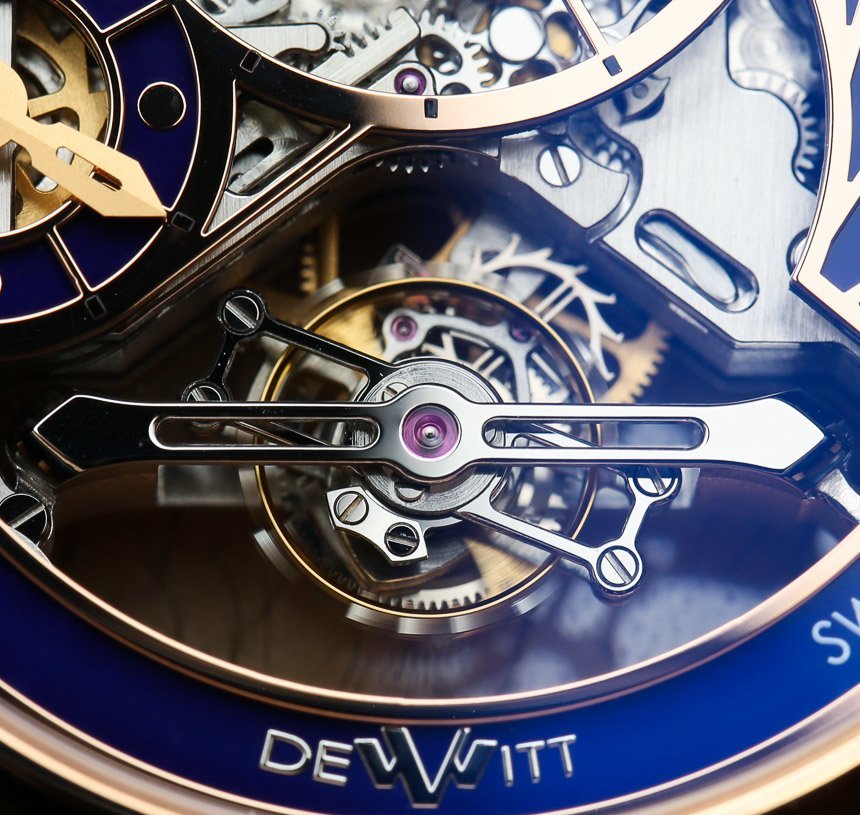
Looking at the Dewitt Academia Grand Tourbillon makes me think of something about how people judge watch design to day. I love how, from time to time, the luxury watch industry somehow inexplicably feels the need to apologize for producing ostentatious products. There is such a big push for “under the radar” and “stealth wealth” that each time certain types of watch collectors see something with a wild design they freak out. These people need to chill and recall that, like traditional art, timepieces are artistic as well. They also serve a double purpose to express both taste and status. You might not like the design of a watch but there is no need to yell from the hilltops that brands are wrong to attempt original or fresh designs. Luxury watches are about showing off (something), and whether or not you agree with what that thing is let’s not delude ourselves that many high-end timepieces are meant to have a place on someone’s wrist who feels as though they have afforded themselves the right to “say” something to to the world.
In fact, that is one of the major things I like about companies like DeWitt – they don’t produce the same old types of interchangeable horological items that could come from any number of brands. These are distinct works of art with a serious level of mechanical thought and effort put into them. An interesting detail is the signature on the back of each of DeWitt’s most complicated timepieces such as the DeWitt Academia Grand Tourbillon. A single watchmaker assembles each of the watches, and their signature is engraved on the back of the watch. It was interesting to view several different DeWitt timepieces and see various names engraved in cursive font on the backs of the movements – a classy touch, if you ask me.
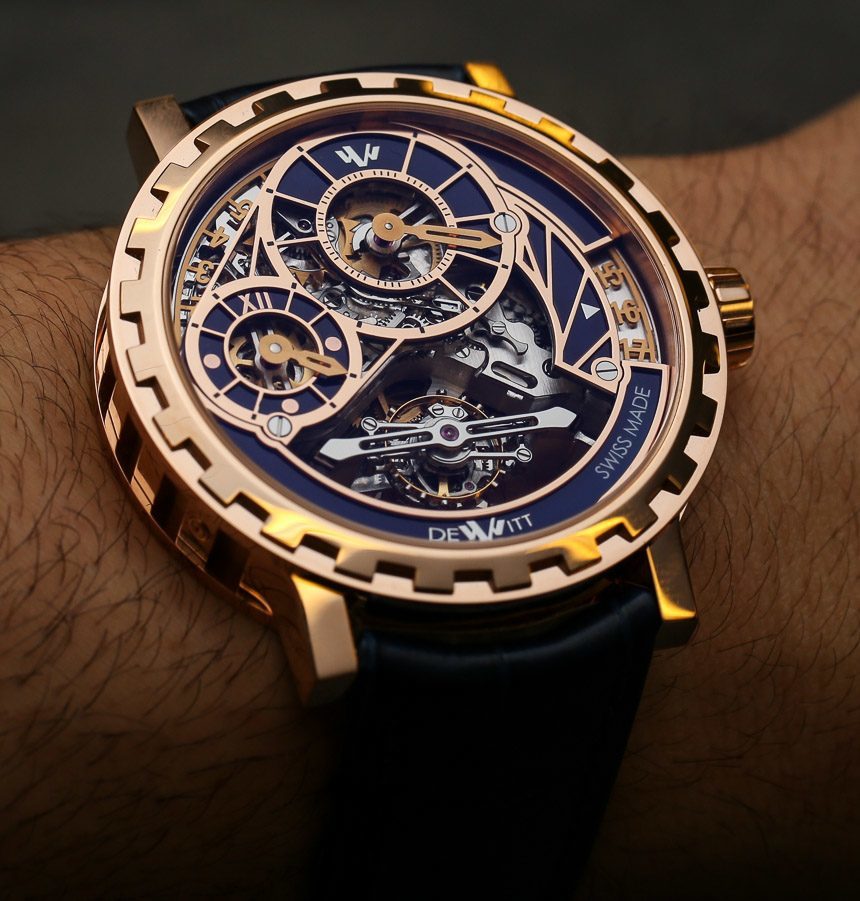

Speaking of the movement, let’s talk about the in-house made DeWitt caliber DW 8030 that sits so nicely exposed inside of the DeWitt Academia Grand Tourbillon case. In many ways, the movement is extremely traditional despite the modern look of the case and the dial design. Composed of 327 parts, the DW 8030 movement builds on 2010’s caliber DW 8028 which was DeWitt’s first totally in-house tourbillon movement. The basic architecture is the same, but the regulator-style time display and a unique bridge design has been included in the DW 8030.
The movement is manually wound and has a power reserve of 65 hours operating at a modest 2.5Hz (18,000 bph). This slower frequency is sometimes desired for tourbillons, as it allows for a greater visual appreciation of the oscillating balance wheel. The free-spring balance wheel is further fitted with a Spiral Straumann balance spring that has a Philips curve. In addition to the time, the movement also offers a date indicator disc whose window is at 3 o’clock on the dial.
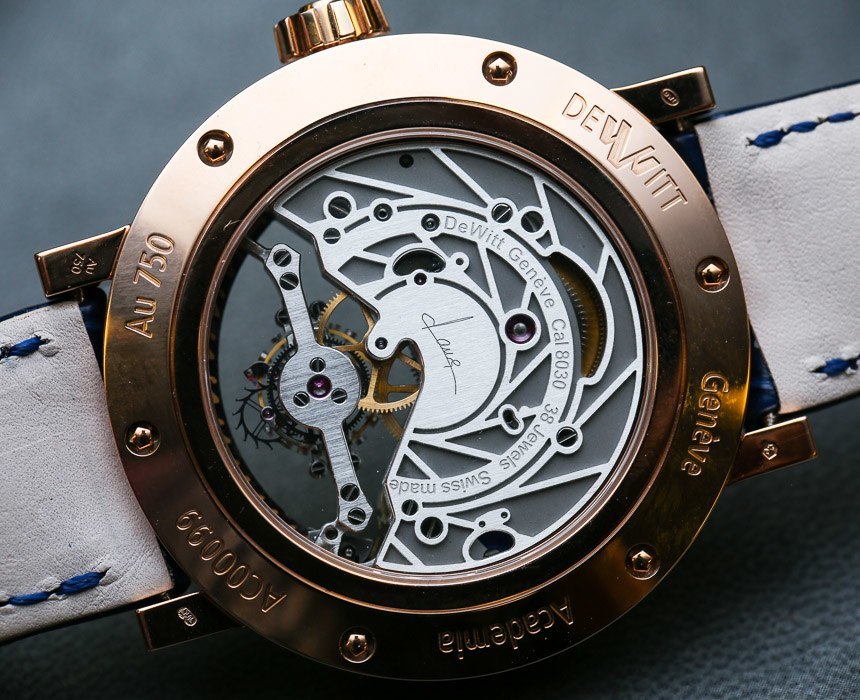
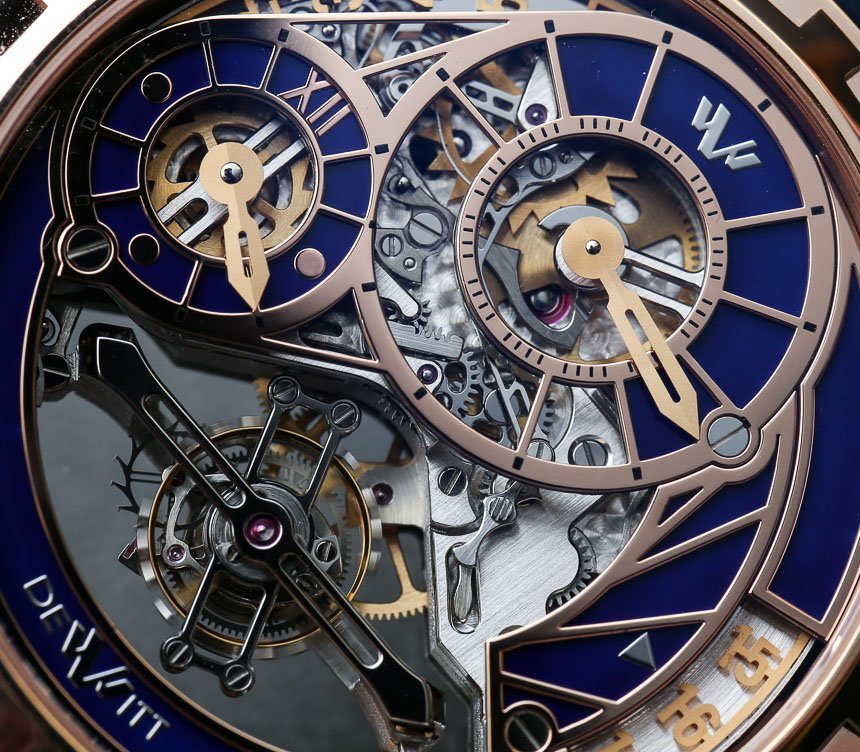
On the wrist, the DeWitt Academia Grand Tourbillon wears largely but isn’t uncomfortable, given the fact that the case is not too thick. The jutting lugs will, however, make it difficult for some people to wear this case style and not feel as though it is too large. Over the years, I’ve further come to very much appreciate the distinct look of DeWitt bezels that remind me of crenelation on castles. There is a sort of opulence to the style when it is rendered in gold. DeWitt often does a good job of producing a watch that goes with a landed aristocracy sort of lifestyle – its really what I want to see on the wrists of an eccentric old world family with generations of wealth.
Legibility may not be the DeWitt Academia Grand Tourbillon’s strong suit, but it isn’t that difficult to read. Seconds can be “inferred” from the spinning tourbillon, while the separated hour and minute hands have pluses and minuses to legibility. On the plus side, because of their jumping nature, they should point right to their respective markers. This is particularly useful for the small hours dial. Having said that, neither the minute nor hour dial is remarkably easy to read, which is especially the case with the minute indicator dial. DeWitt puts all that time and effort into a jumping minute hand… but doesn’t create a dial with clear minute indicators that allow the wearer to appreciate the precision of this functionality.
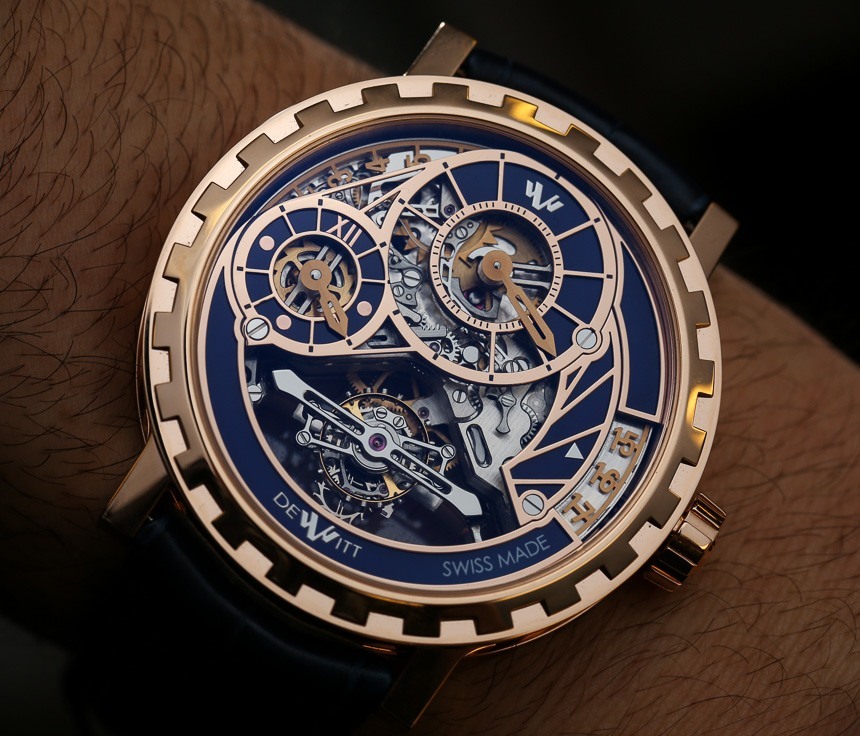

In a nutshell, and based upon my above statement, I feel that separately, the case design with dial and the DW 8030 movement are interesting and laudable creations. When put together, they make for a lovely design, but I still don’t feel that the dial design of the DeWitt Academia Grand Tourbillon is able to fully demonstrate the technical and legible intelligence of the jumping hour and minute hands. It would actually be easy for DeWitt to come out with a “purer” version of the watch that remedies this.
The DeWitt Academia Grand Tourbillon watches are also all limited editions. The various models such as the AC.GT.001, AC.GT.002, and AC.GT.003 are all limited to 99 pieces each with a price of $312,000 USD. dewitt.ch

